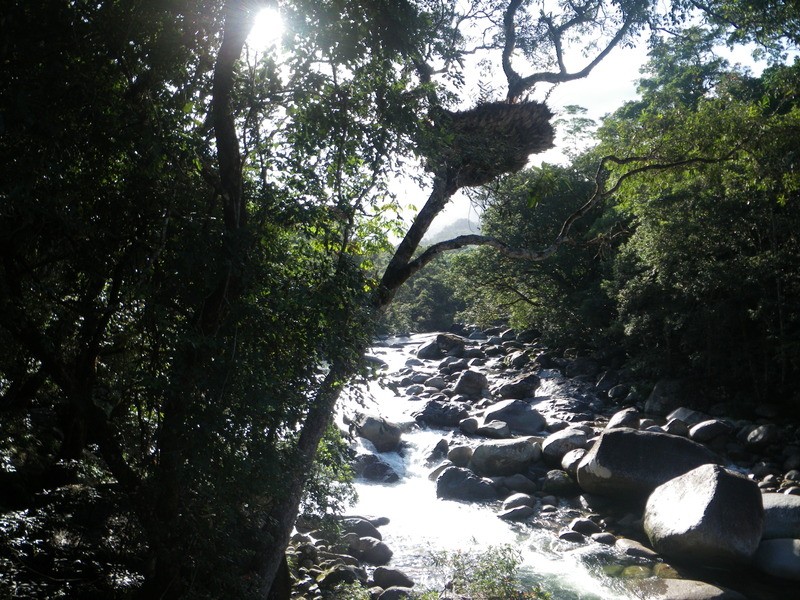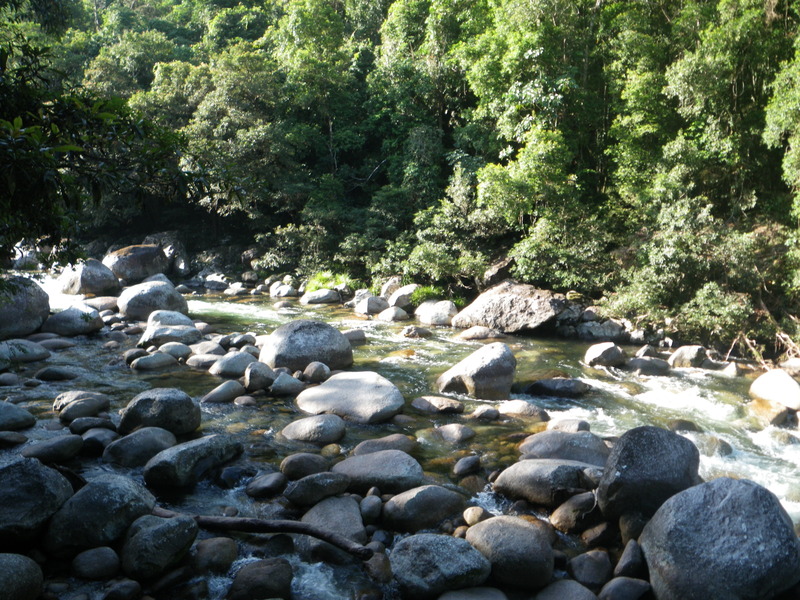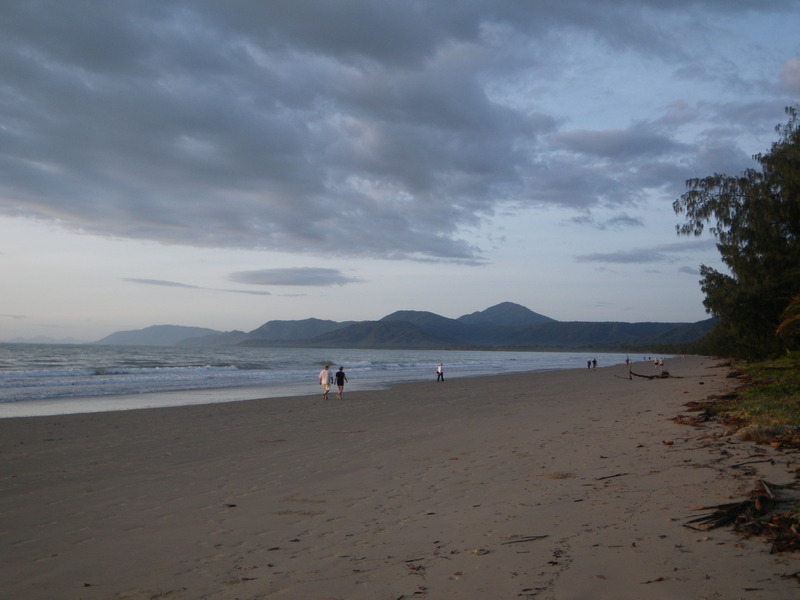
Port Douglas is North of Cairns, and at 16 degrees South latitude, is very much in the tropics. Port Douglas got its start in a gold rush in the 1870s, but by the 1960s was reduced to a very small town. By the 1980s, tourism had taken off, and Port Douglas is now a flourishing tourist town, bordered on the East by beautiful 4-mile beach.

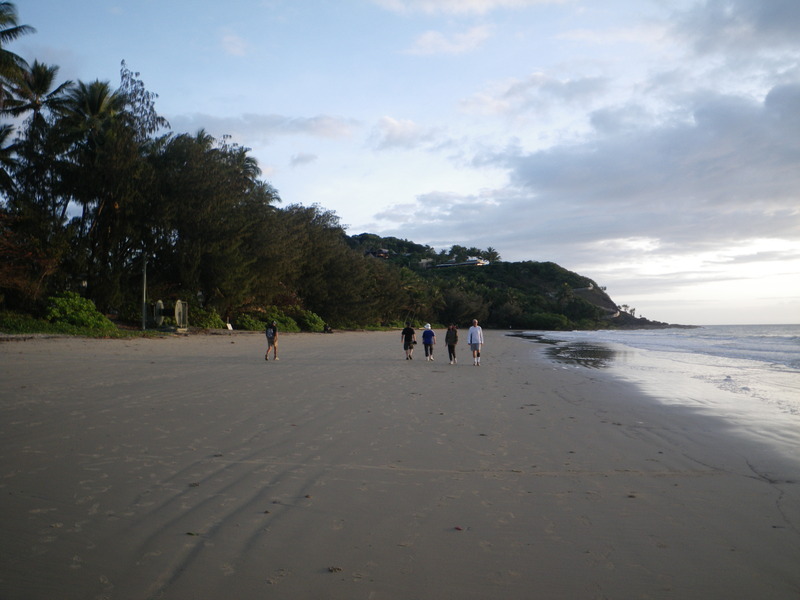

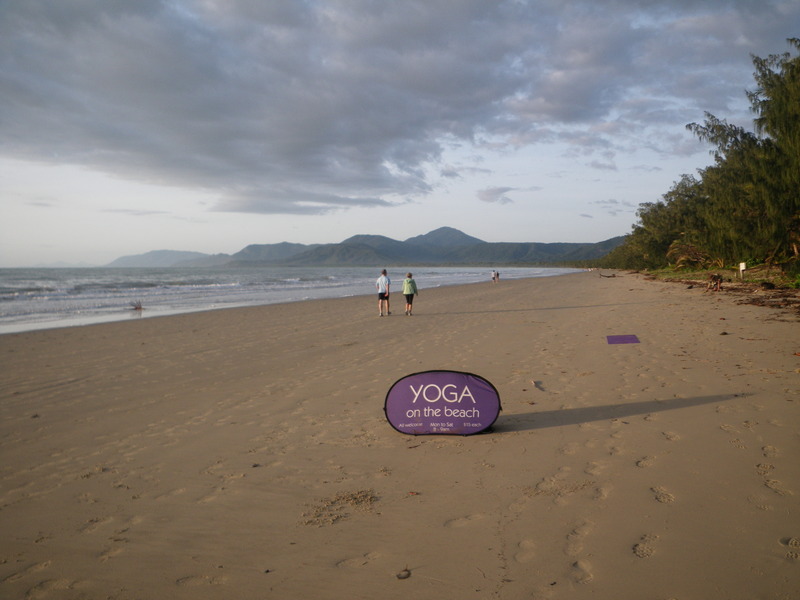
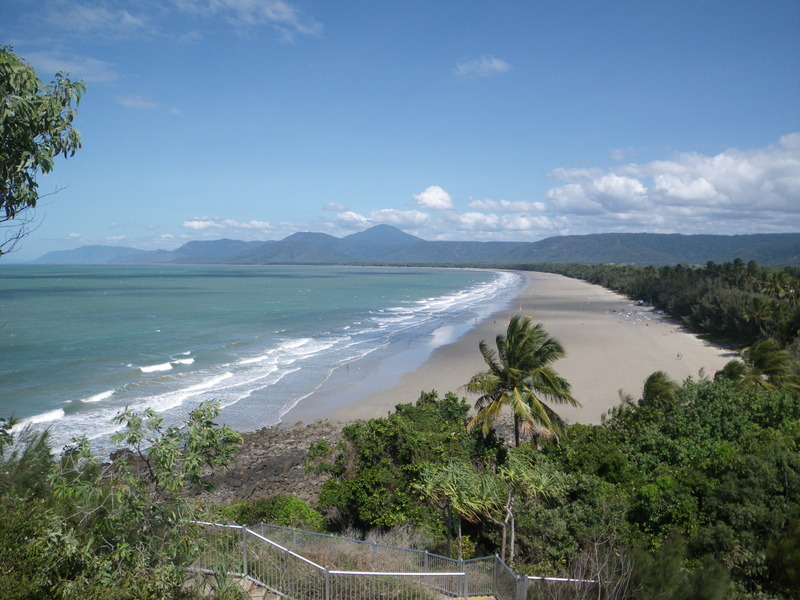
The west side of the center of town is a saltwater inlet lined with mangroves, and home to a small number of saltwater crocodiles. To see them, I took a 1.5 hour cruise with the Lady Douglas.
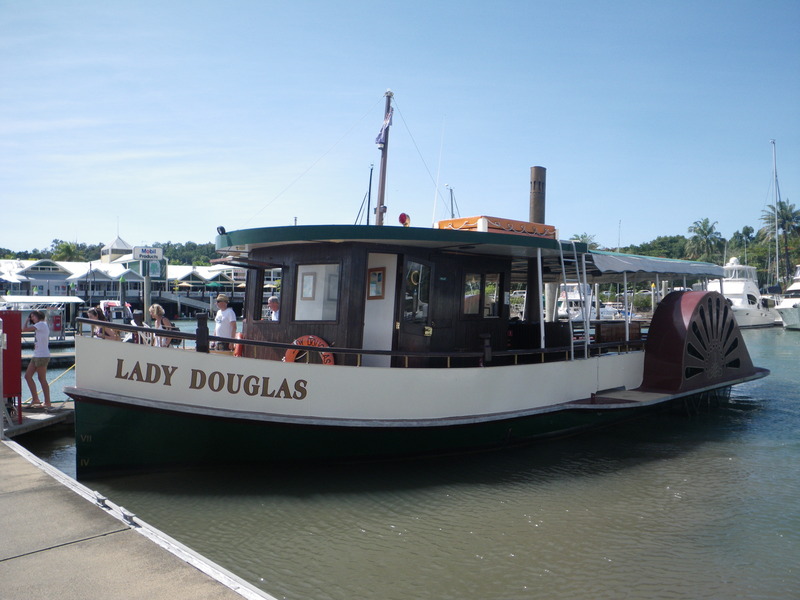
Unfortunately, the paddlewheels are decorative only, and the Lady Douglas uses a propeller to move. But that is the only complaint I have about the Lady Douglas -- in every other way, the cruise was satisfactory.
On the cruise we saw five wild saltwater crocodiles. Four of the five were female, which are smaller than the males. The fifth was a small male. Apparently there is a resident alpha male that allows females to come into the inlet, but usually fights males and wins. In at least one case that we were told, the intruder was killed and later found dead. However, at the time of my visit the resident alpha male was off to visit a girlfriend somewhere else, so we did not get to see him. He is over 4m long, and I imagine rather impressive looking.
So the largest crocodile we saw was this female, which is about 2.75m long.

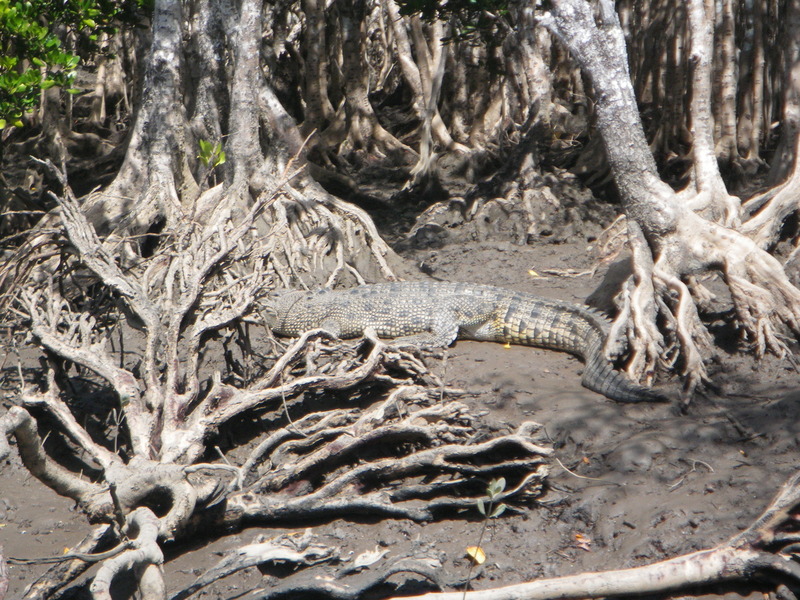
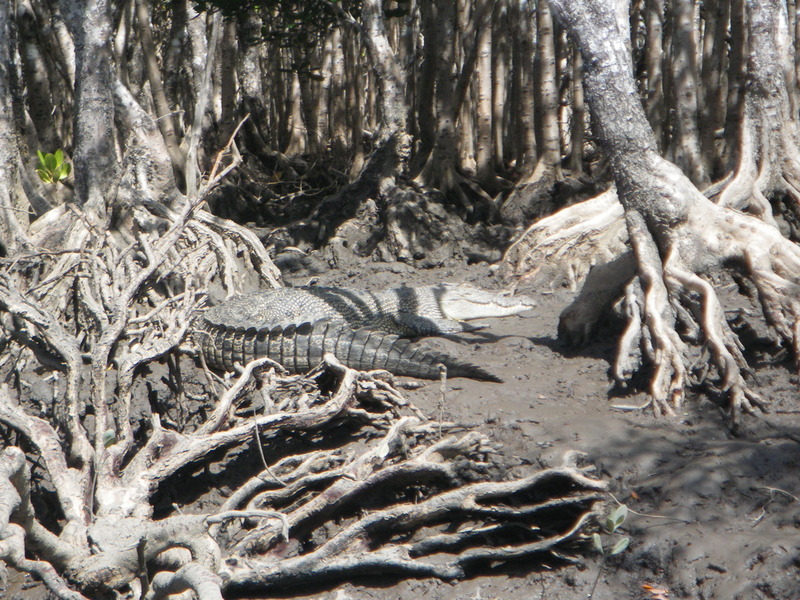
She is lying among mangrove roots above the high tide line, warming up in the sun to about 30C, so she will be able to feed on fish all night in the relatively cold (23C) water of the inlet.
One crocodile we saw was waiting for the sun to warm the shore.
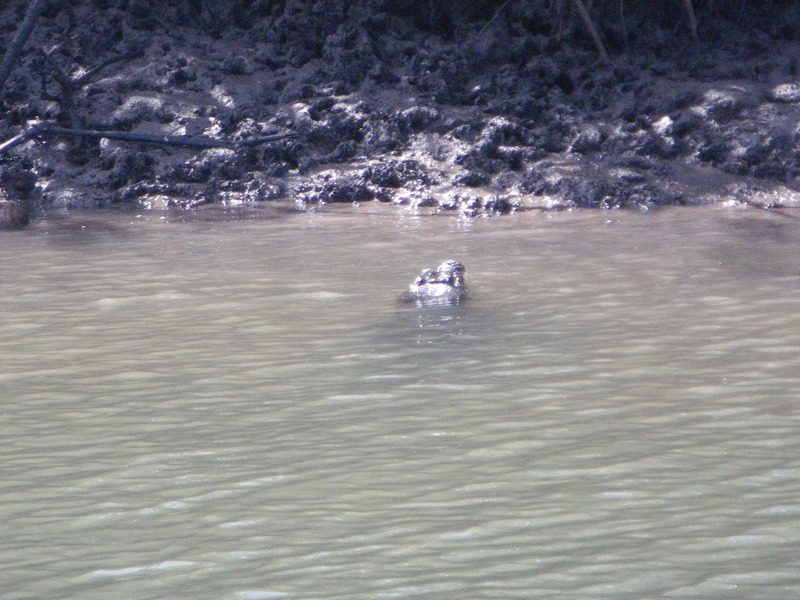

Another one was sunning on the shoreline among moored boats. It is near the center of both of the following pictures.
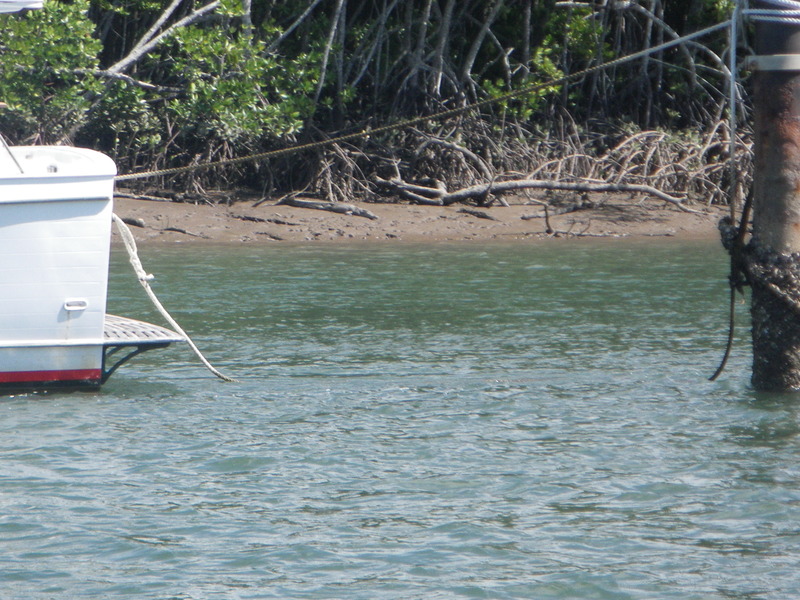
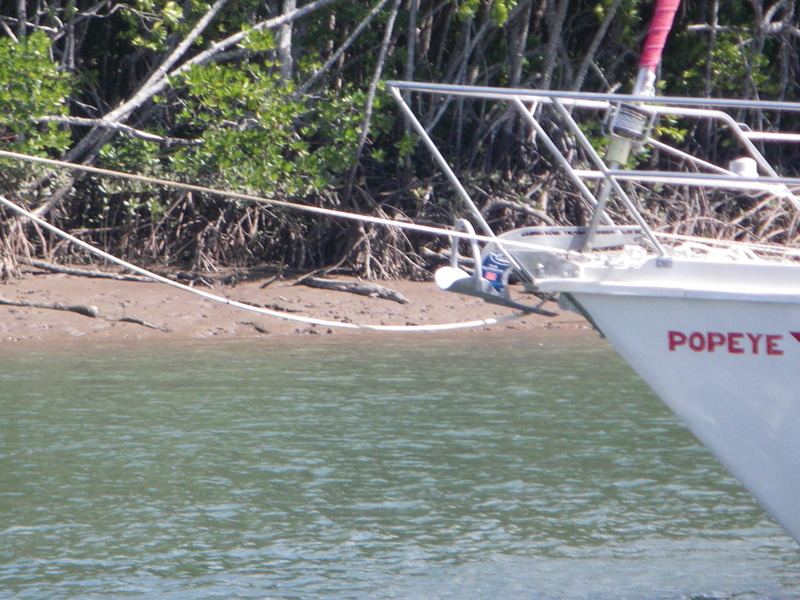
This one was also enjoying the sunshine.

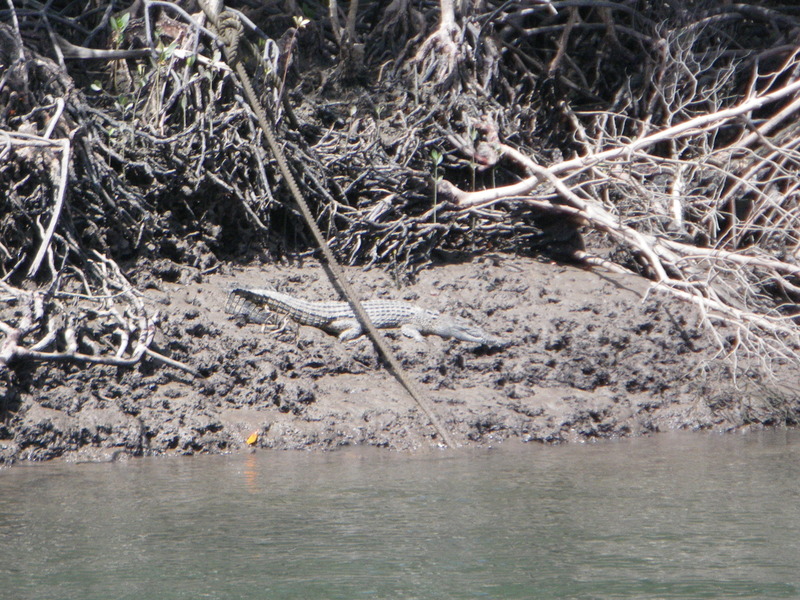
And this one was really hard to spot (hint: look slightly below the center of the first picture).

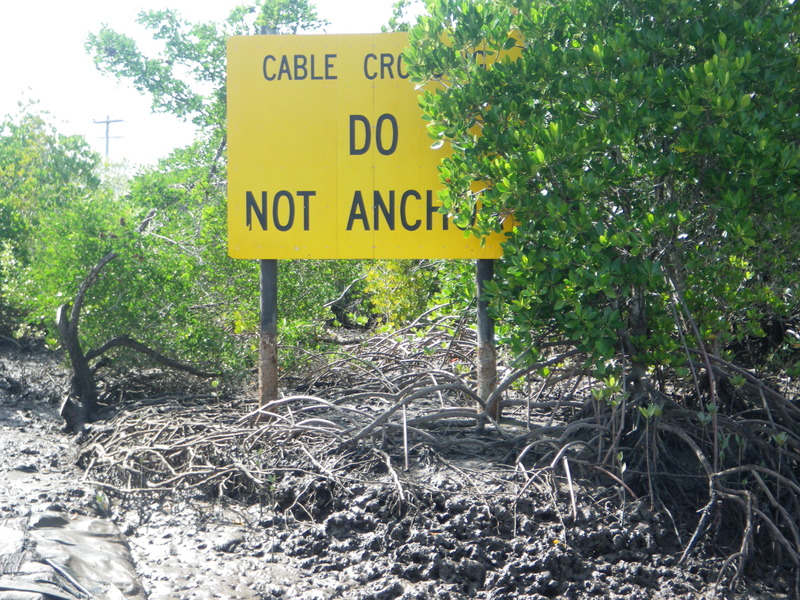
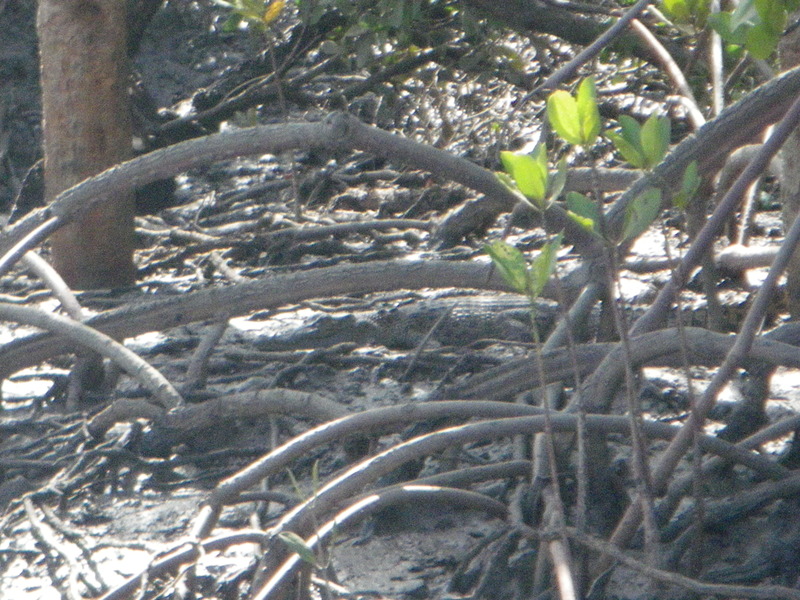
The inlet also had other wildlife, including these two birds.

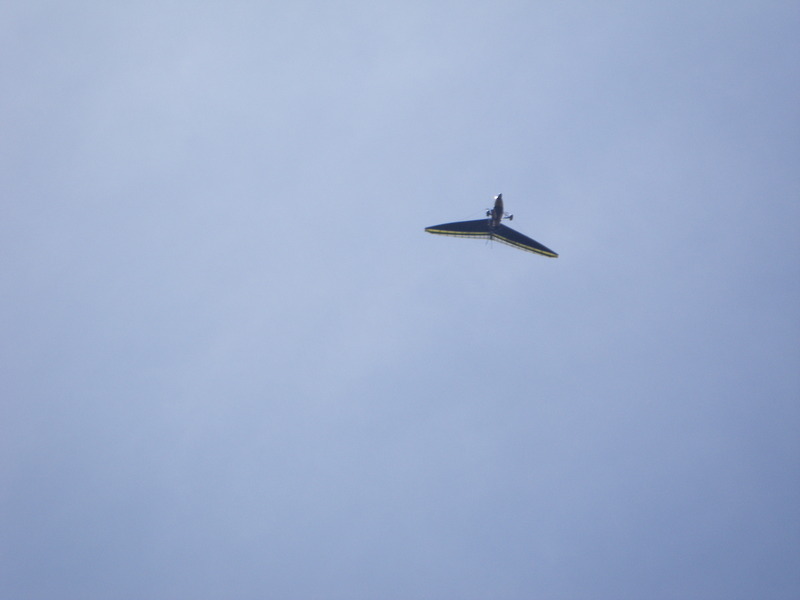
On the inlet, several nice boats were moored. In the background of the second picture, you can see a gap in the mountains. That is the gap through which the Mossman river flows, and is called the Mossman Gorge.
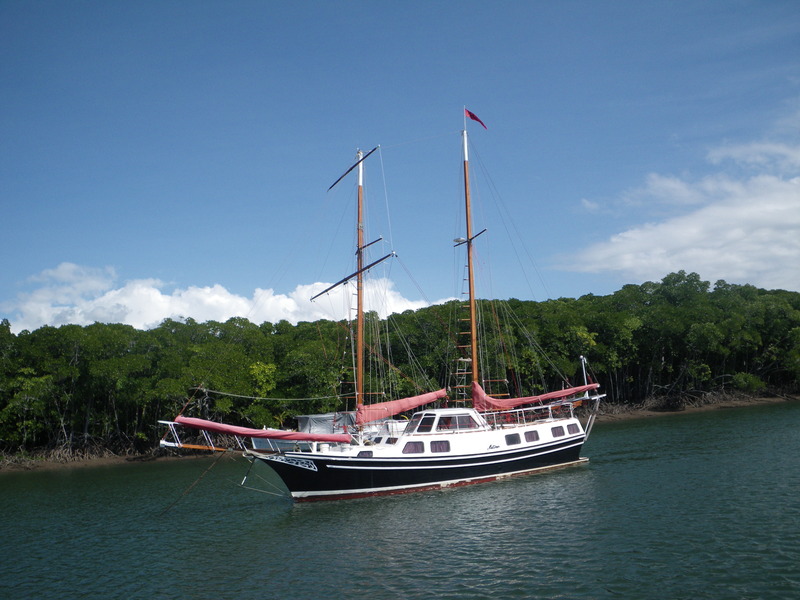
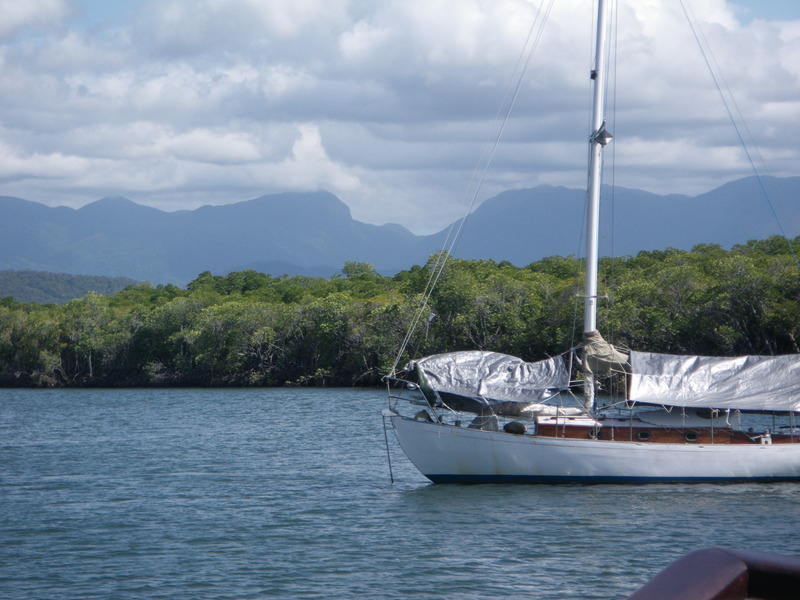
There were also a few wrecks, such as this one.

In 2011, cyclone Yasi swept through South of here. Normally, this inlet would be a safe place to moor a boat in a cyclone, but this one was moored in water that became too shallow when the tide went out.
After the cyclone, the owner tried to rescue his boat, but for three days, the alpha male crocodile sat right next to it. After three days, the owner gave up, and the boat is still here.
North of Port Douglas is the town of Mossman, then the Daintree river, and further yet, cape Tribulation, which is also called Kulki. I rented a car for a day to visit these.
Cape Tribulation was named by James Cook when his ship, Endeavor, hit a reef near the cape on June 11th, 1770. About 5 hours later, the Endeavor hit another reef, now named Endeavour Reef, and nearly sank. Lieutenant James Cook was having a very bad day on June 11th, 1770.
As the ship was being repaired at the mouth of Endeavour River, in what is now Cooktown, a nearby mountain was named Mount Sorrow to express the feelings of the sailors. The taller mountain in the following picture, under the cloud, is Mt. Sorrow. The nearer, smaller mountains are the Alexandra range. And the river in the foreground is the Daintree river.
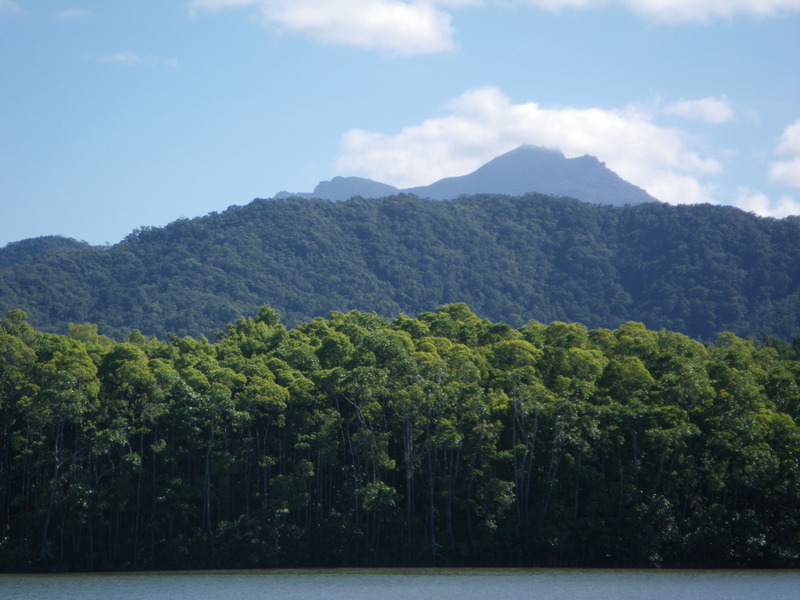
The road to cape Tribulation, or "Cape Trib", does not cross the Daintree river. Instead, this ferry provides passage.
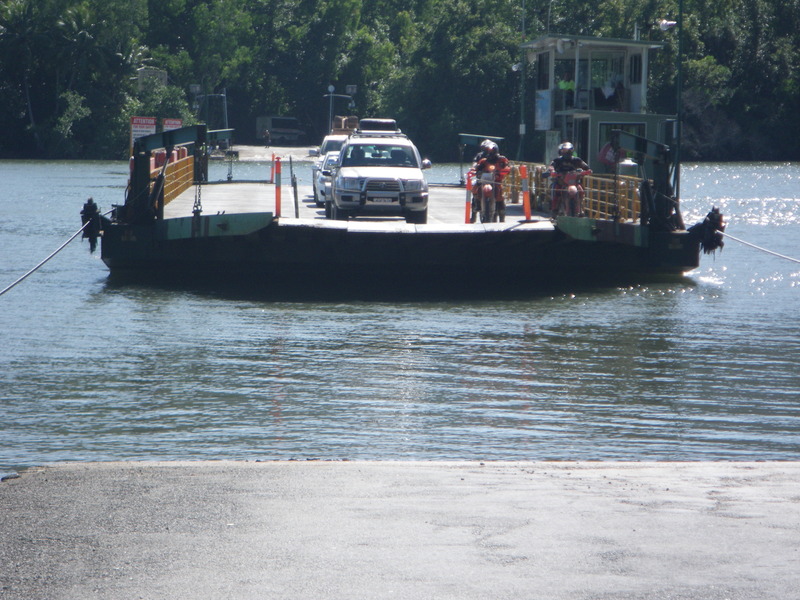
The ferry runs on two cables strung across the river, but only has a motor on the downstream (right) side, under the pilot house.
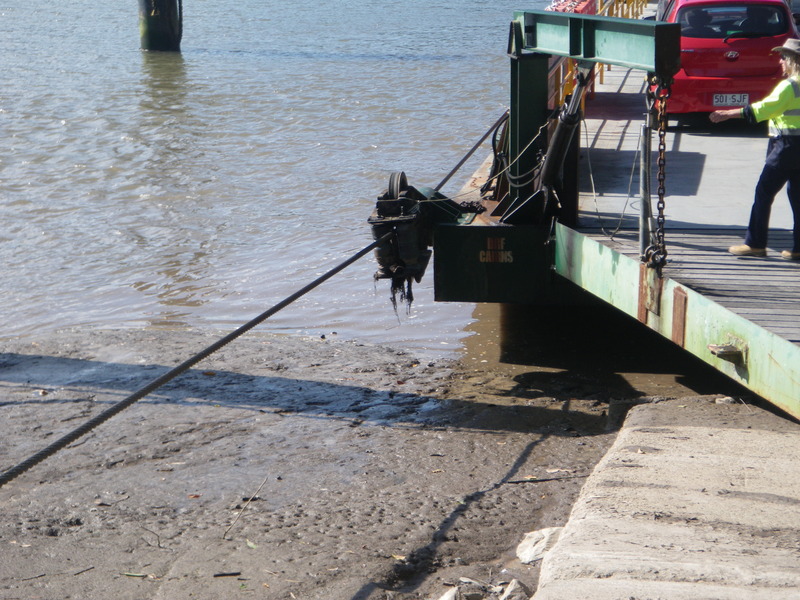
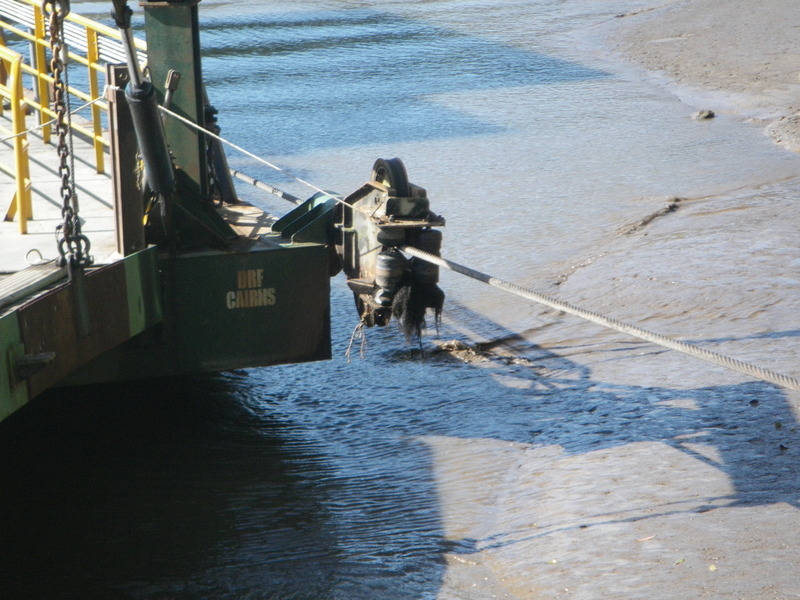

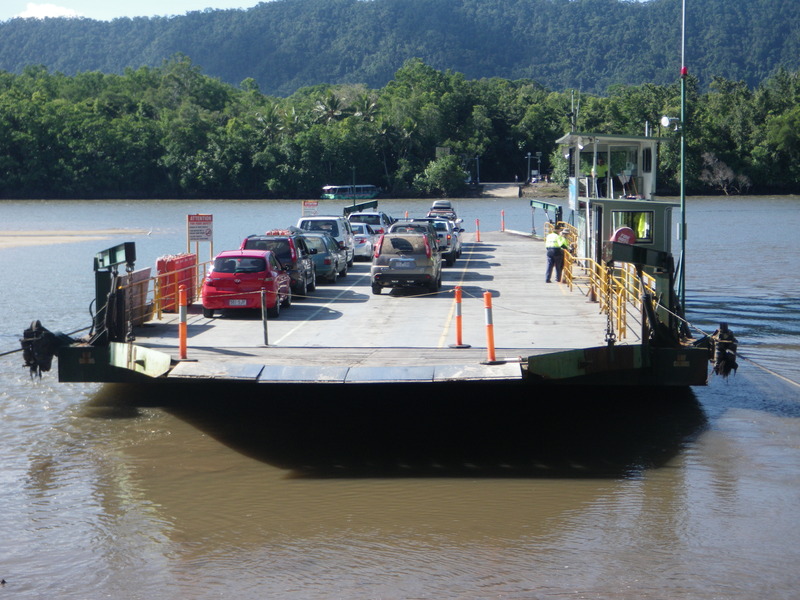
The Daintree River itself is quite nice.
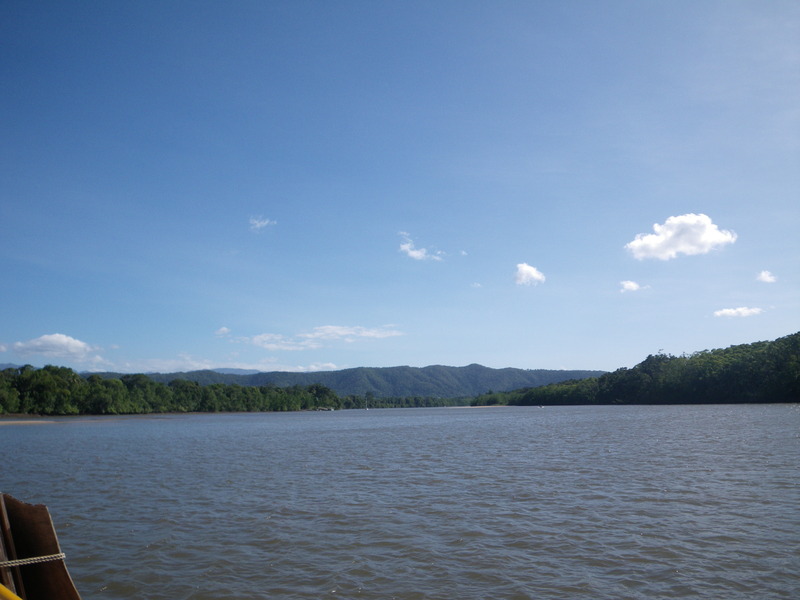
Daintree National Park protects rainforest in many different places around the Daintree river, all the way to Cape Tribulation and beyond. One of the reasons for protecting the rainforest is, this rainforest is the home of the Cassowary, a large flightless bird found only in this part of Australia and in New Guinea.

Apparently, the cassowary eats the fruits of up to 400 different species of plants, and the seeds come out in its droppings. In this way, cassowaries act as gardeners, spreading the seeds of rainforest plants. Without cassowaries, the rainforests might not grow very well.
The cassowaries can also be aggressive and dangerous.
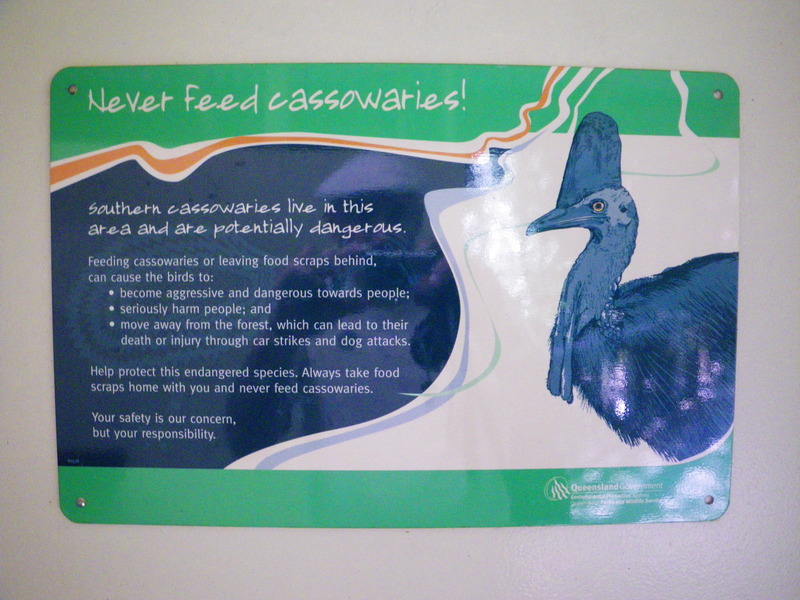
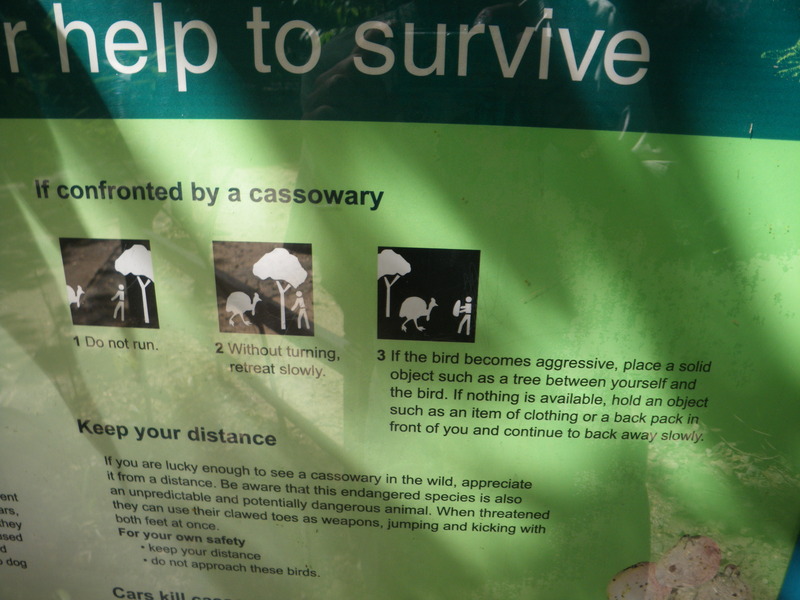
For better or for worse, I did not see any Cassowaries. Instead, I saw two Brush Turkeys, which were quite tame.
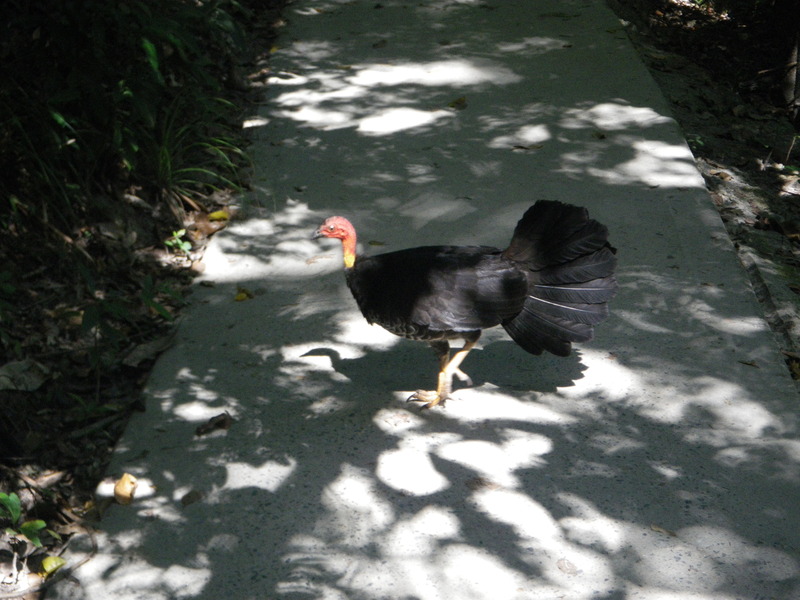

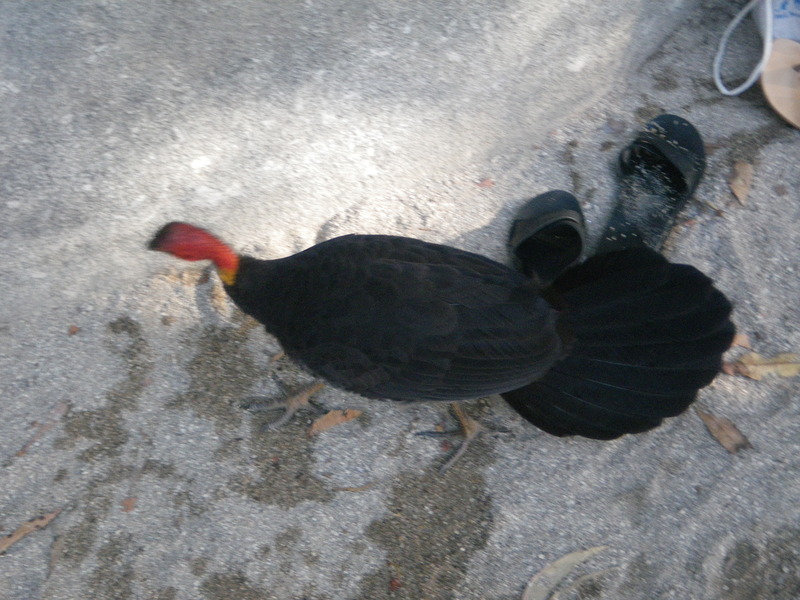
I also saw some little birds that were hitching a ride on the ferry across the Daintree river.
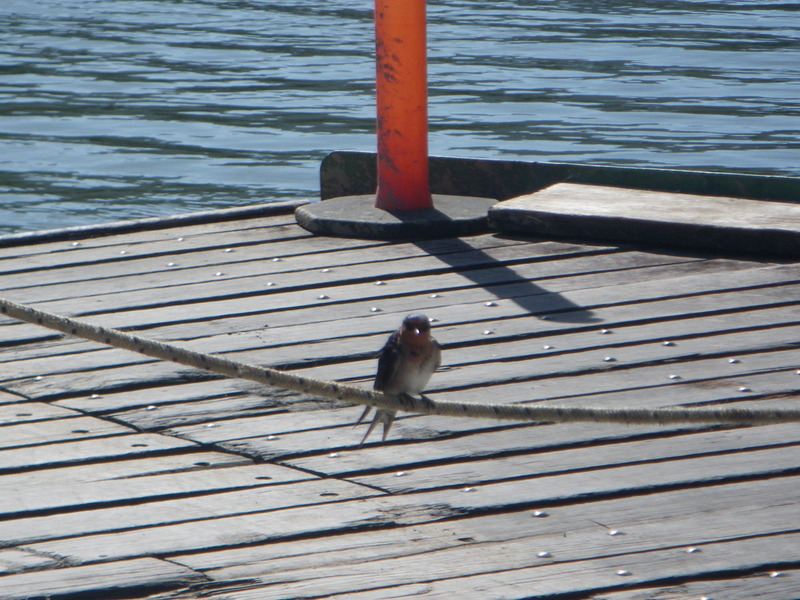
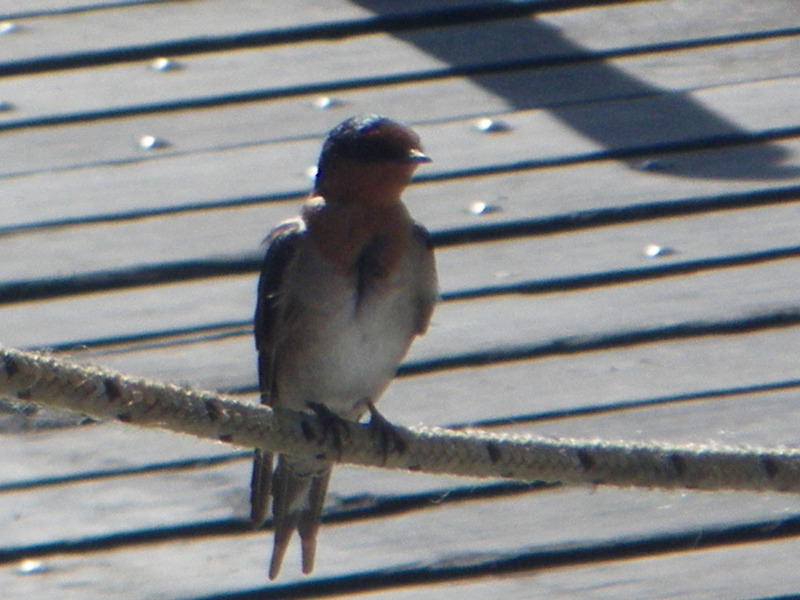
Having talked about birds, it is time to talk about the landscape.
Cape Tribulation has a very nice beach.
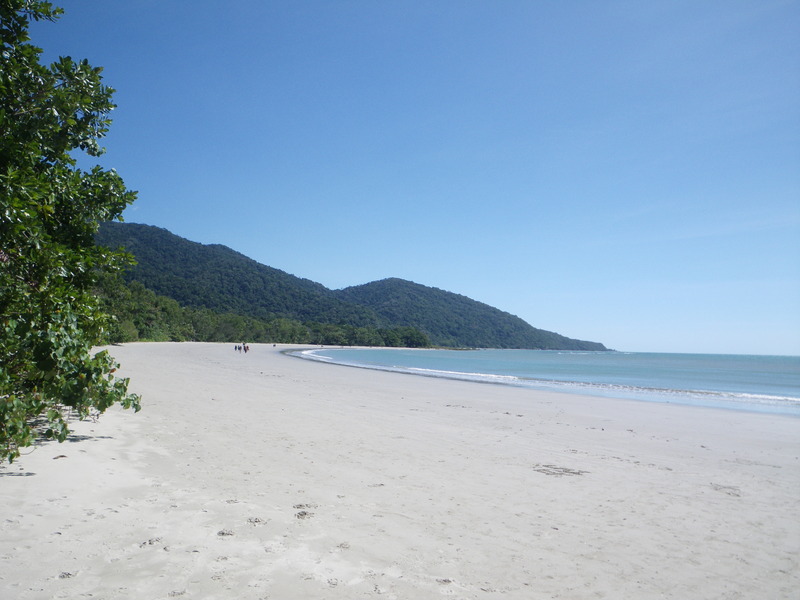

With a beautiful rainforest behind the beach.

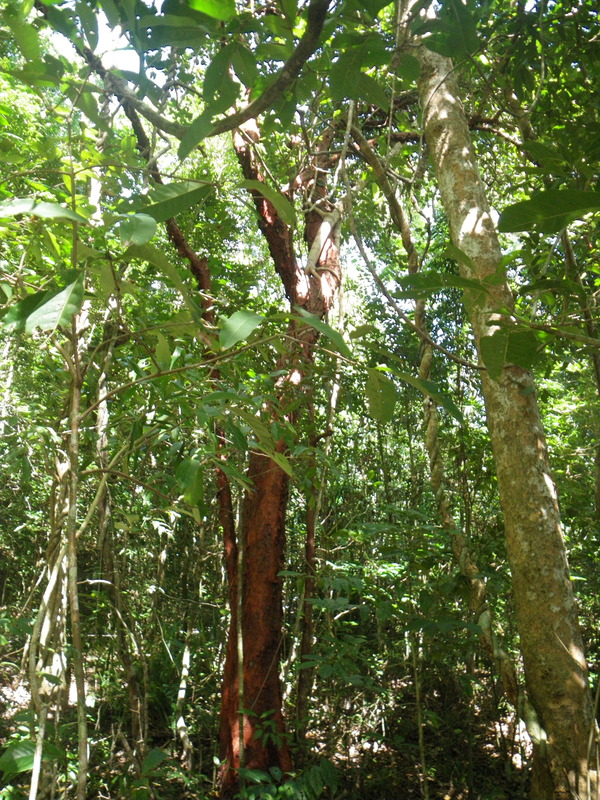
Just North of the Daintree river crossing is the Alexandra lookout, with a good view of the Daintree river estuary and the coastline all the way back to Port Douglas.

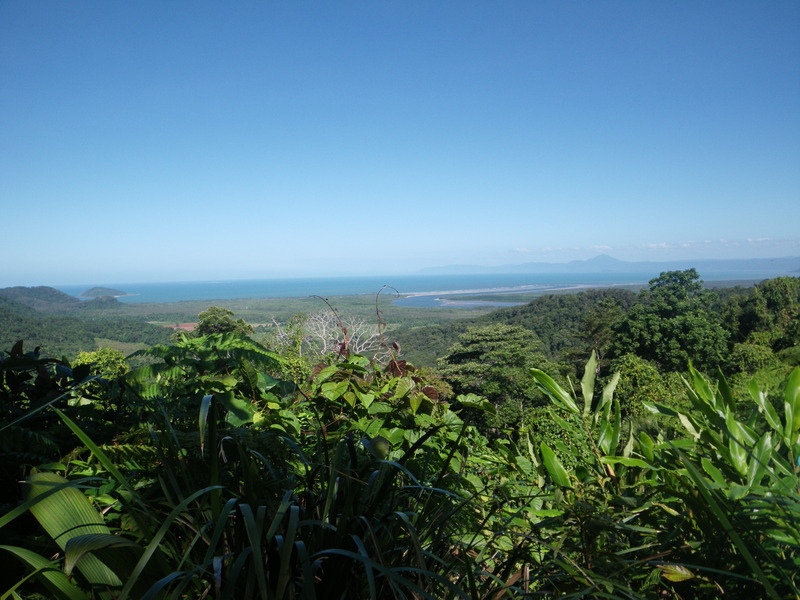
In-between the Alexandra lookout and Cape Tribulation, I went on a botanical walk called Marrja. It wanders from rainforest down to a mangrove forest and back. The mangroves include several different species, and the rainforest is very diverse, including large cycads, fan palms, epiphytic basket ferns, and a nice variety of trees and vines.
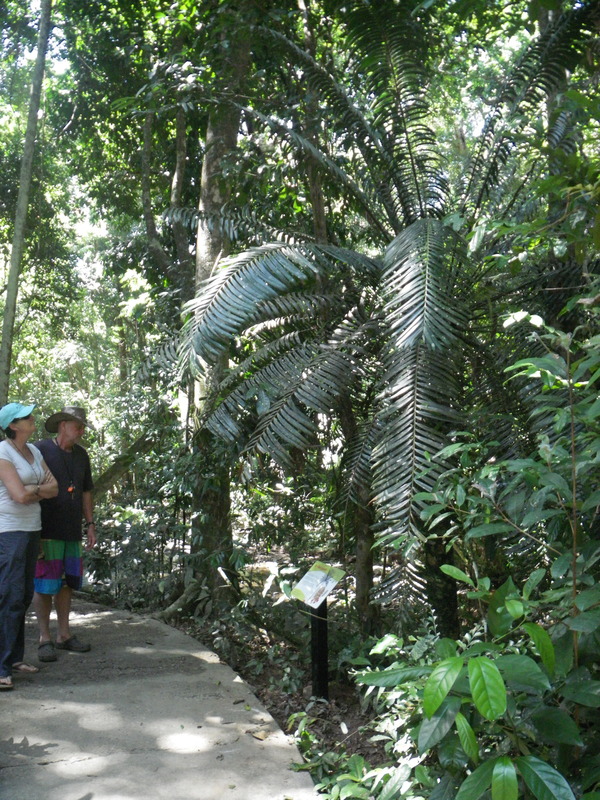
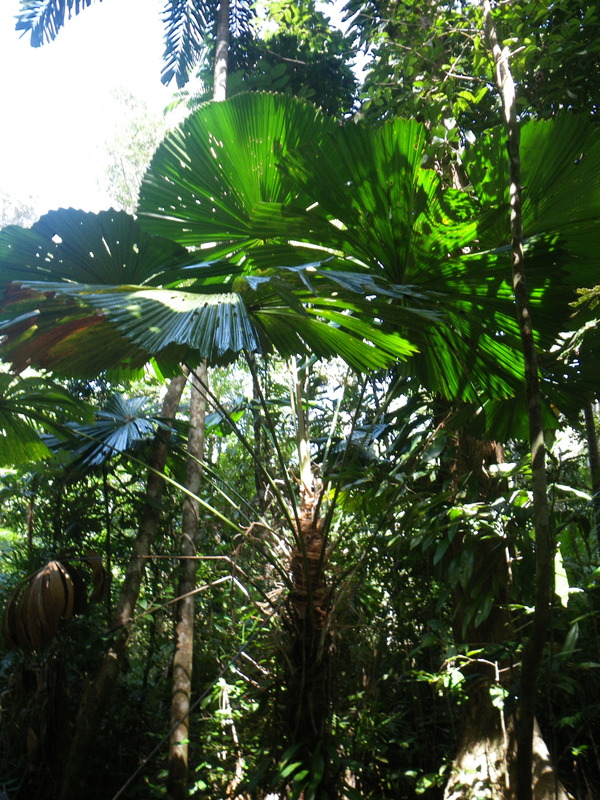
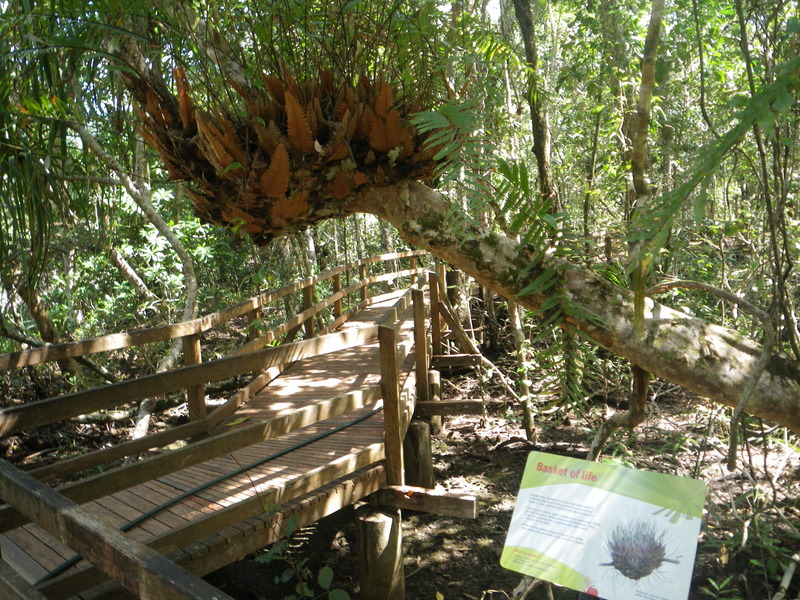
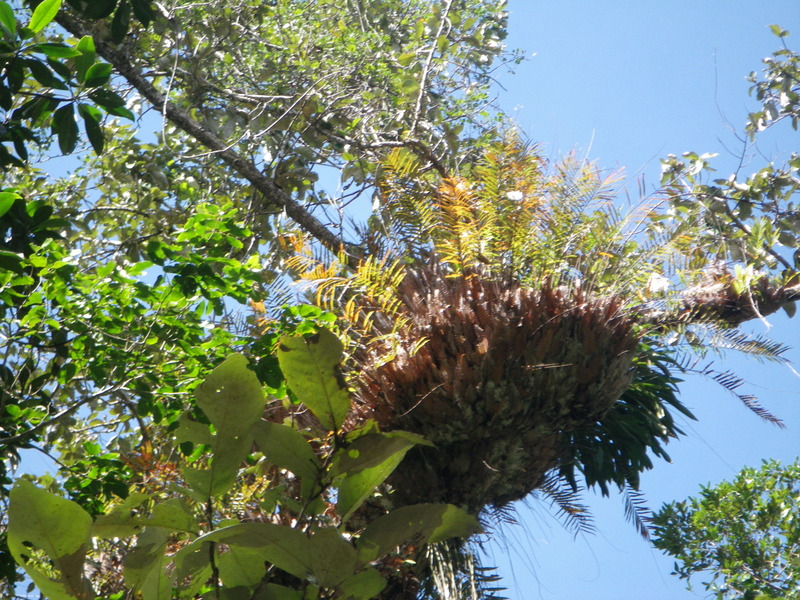

One of the trees was a fig (banyan) that had obviously grown around a tree. The tree then died and rotted away, leaving a fig with a hollow core.
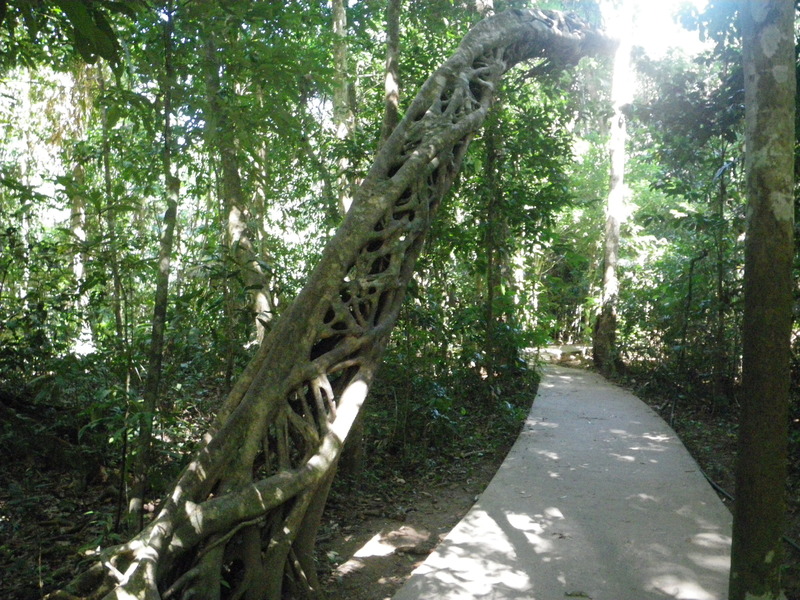
There was also an unpleasant-looking plant that I was glad I did not run into.

On a different walk called Jindalba, I think I saw either Cordyline fructilosa, known in Hawaii as Ki or Ti, or a close relative.
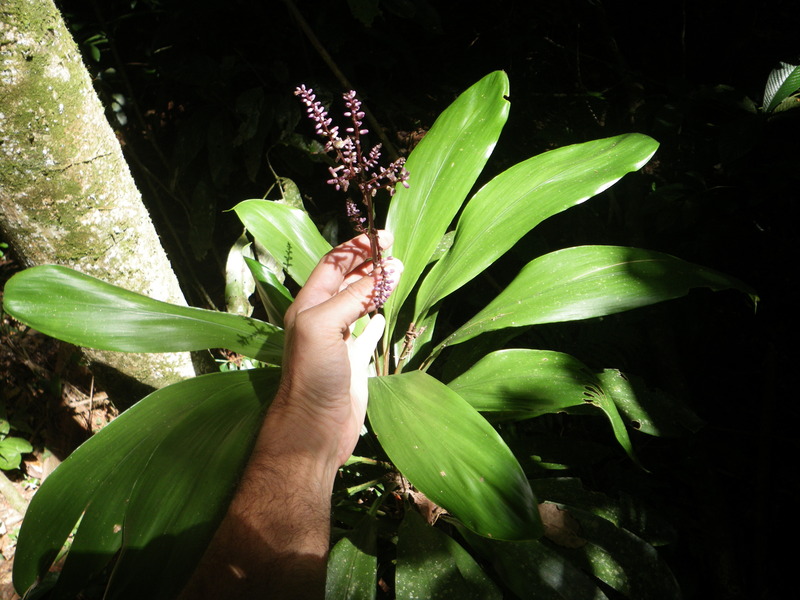
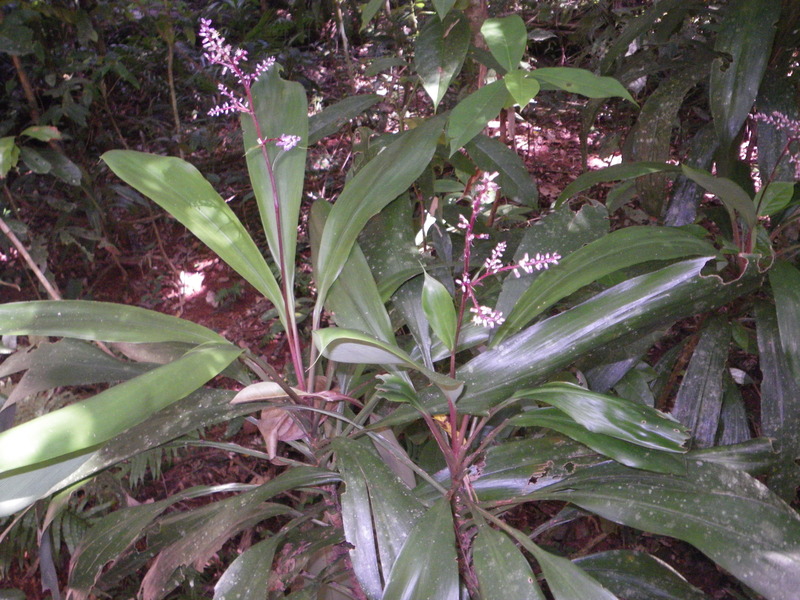
Everywhere I saw different kinds of wild ginger. I believe, though I am not certain, that the flower below is a kind of ginger.

The area between Mossman and Daintree is a center of sugar cane cultivation in Australia, but they also have bananas. I am not sure of the purpose of the blue plastic bags, but I suspect they cover the fruit. Always practice safe bananas!!!

Like Port Douglas, Mossman also was established during the gold rush, as demonstrated by the Mossman Inn.
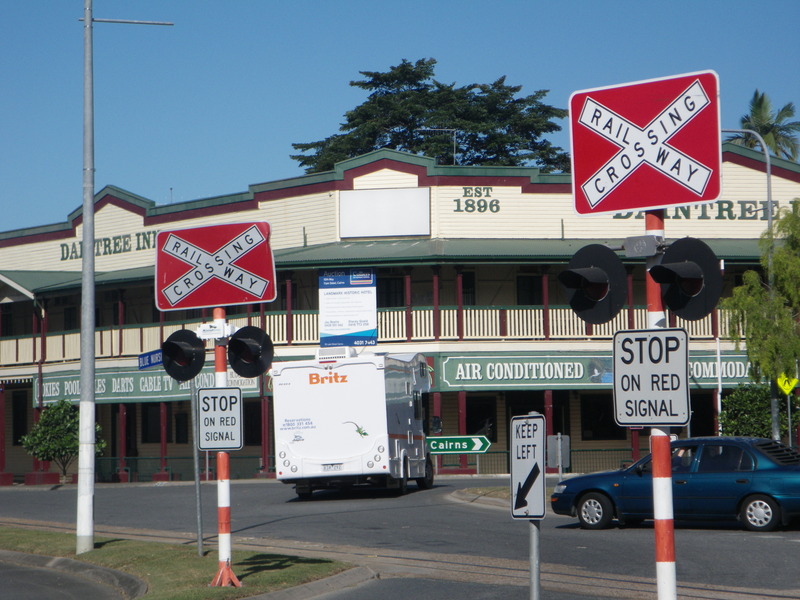
I did not go very far into the Mossman gorge, because the longer trail was closed due to a bridge in need of repair. So I just took some pictures of the river.
